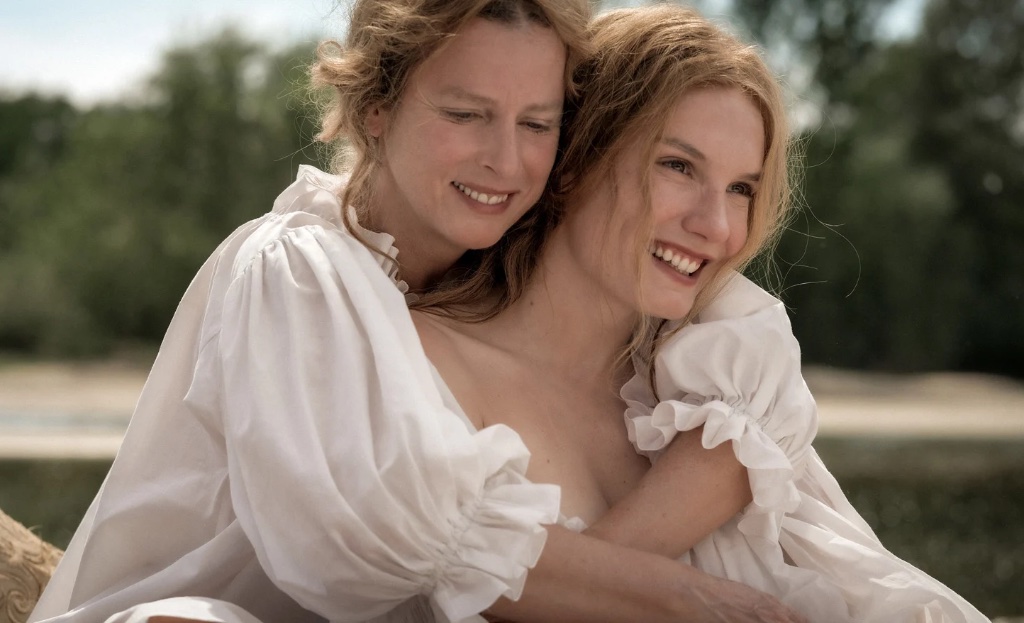
The fact that the life of Marie, Marquise de Sévigné (1626-96) has, as far as I am aware, never been made into a feature film before is perhaps unsurprising. How does one remain true to the reason her name is so well-known – her voluminous correspondence – while trying to make an engaging and visually interesting movie? To see her clutching a quill and looking pensive, accompanied by voiceovers reading out the letters, is certainly not enough to keep a general viewer entertained.
In her new film, Madame de Sévigné, director Isabelle Brocard opts to steer largely away from scenes of the marquise scribbling on paper and focuses instead upon the complicated relationship between Sévigné (played by Karin Viard), whose love for her daughter verged on the obsessive, and her daughter Françoise (Ana Girardot), who was the recipient of the vast majority of her mother’s letters.
Sévigné had been orphaned as a young child and was given a wide-ranging education by her uncle. She married at the age of 18 but was widowed in her mid-20s after her womanizing husband was killed in a duel over one of his lovers. This loss paradoxically allowed her to lead a much more independent life than most women of the time, just as her close friend, the novelist Madame de Lafayette, achieved a level of autonomy by living far apart from her husband and developing a close relationship with the maxim-writer François de La Rochefoucauld. It is significant that Sévigné actively chose never to marry again. In the film, she is shown trying to instill in Françoise an independent spirit similar to her own.
We know that Françoise was introduced to Louis XIV’s court at the age of 16, but Brocard uses her artistic license early on in the film to depict the Sun King attempting to sexually assault Françoise in the royal gardens and being thwarted by her ever-vigilant mother.
When Sévigné chooses the older Comte de Grignan (gently played by the actor and director Cédric Kahn) as Françoise’s husband, it transpires that not only does the new Comtesse de Grignan follow her husband to Provence, several hundred miles away from Paris, but also rebels against her mother’s desire for her to be autonomous by becoming a subservient wife and falling pregnant several times. Each pregnancy was viewed with huge trepidation by Sévigné, who knew how dangerous childbearing could be for women.
One of the more poignant aspects of the film is the contrast between Sévigné’s all-consuming love for her daughter and Françoise’s nonchalance in leaving her own newly born first child (a daughter) in Paris with Sévigné when she follows her husband to Provence.
Overall, the film is lovely to look at (even if, as one 17th-century expert said to me, the characters’ unkempt hair seems at odds with the hairstyles shown in portraits from the time), and the 17th-century social, political and intellectual domains (especially the literary salons of the day) are nicely portrayed. However, by not closely charting the content or composition of the letters, Brocard faces a different directorial challenge. As Sévigné’s correspondence owes its presence in our lives entirely to the mother and daughter’s absence from each other, the letters mostly recount what the pair have done while apart. The film, on the other hand, prioritizes the times that the two women were physically together, whether in Paris or in Provence, so through necessity must largely ignore the letters themselves and rely mostly on conjecture.
As a result, much of the brilliance, humor and inventiveness of Sévigné’s letters is completely missing from this movie. While both Viard and Girardot are engaging screen presences, most of the time, Viard’s Sévigné comes across as lugubrious, anxious and whining. I couldn’t help but miss the sheer enjoyment of life and joie de vivre expressed in the letters themselves.
Favorite
I still want to see the movie, and I only have read her first book of published letters, but it is a shame that more of her life through her letters wasn’t depicted. I loved how much Madame de Sévigné’s personality seemed to shine through her letters that I read in the first book. She seemed such a high-spirited person!
Madame’s letters were the reason I went back to university and majored in French, allowing me to read the originals! Her quixotic, delicious, and detailed accounting of the life at Louis’ court for her absent daughter should have been the focus of this movie. Tant pis!